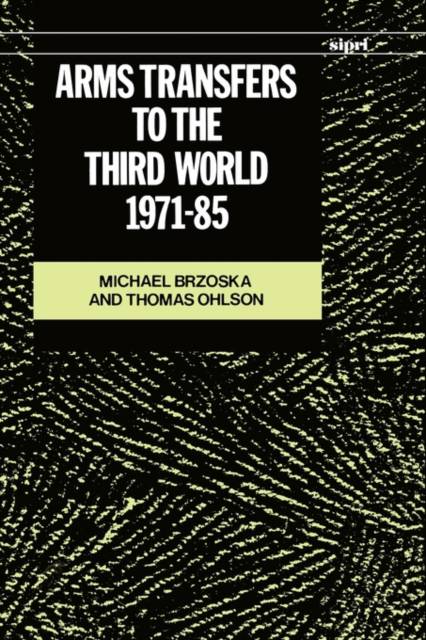
- Afhalen na 1 uur in een winkel met voorraad
- Gratis thuislevering in België vanaf € 30
- Ruim aanbod met 7 miljoen producten
- Afhalen na 1 uur in een winkel met voorraad
- Gratis thuislevering in België vanaf € 30
- Ruim aanbod met 7 miljoen producten
Zoeken
Omschrijving
The value of conventional weapons imported by Third World countries between 1971 and 1985 increased four times over that of the previous two decades--a leap that reflects profound changes in the economic and technological relations between industrialized nations and the Third World and holds serious political repercussions. A comprehensive overview of the flow of conventional weapons between 1971 and 1985, this volume analyzes both the suppliers--their arms export bureaucracies, degree of dependence on arms exports, and shifts in arms export policies--and the Third World recipients. Providing valuable insight into the changing arms strategy of Third World countries, the book assesses the reasons underlying this influx of weapons, the factors that propel the arms trade, and the implications of structural changes that have occurred in the market.
Specificaties
Betrokkenen
- Auteur(s):
- Uitgeverij:
Inhoud
- Aantal bladzijden:
- 400
- Taal:
- Engels
- Reeks:
Eigenschappen
- Productcode (EAN):
- 9780198291169
- Verschijningsdatum:
- 29/10/1987
- Uitvoering:
- Hardcover
- Formaat:
- Genaaid
- Afmetingen:
- 156 mm x 234 mm
- Gewicht:
- 737 g

Alleen bij Standaard Boekhandel
+ 259 punten op je klantenkaart van Standaard Boekhandel
Beoordelingen
We publiceren alleen reviews die voldoen aan de voorwaarden voor reviews. Bekijk onze voorwaarden voor reviews.











